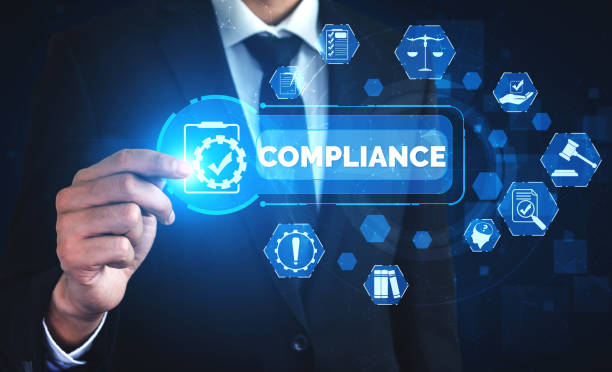How to Identify Bias in Business Compliance and Address It

Businesses are to operate under rules, regulations, and standards, set internally and externally by the government. Unfortunately, there are times when bias in business compliance is present. The real question lies in how you can identify it, and how best to address it. Please keep reading to find out what business compliance means, and how you can identify bias in the same, and address it.
What is Business Compliance?
This is the state in which a business and its employees follow the set rules, regulations, and standards. It ranges from safety standards to data and security requirements. Additionally, it refers to engaging in ethical activities that apply to the business or industry at large. The rules, regulations, or standards can be set by the business or company itself or the government.
Business compliance deals with the policies and procedures that are available internally, and those put in place by the state laws. Therefore, business compliance is important for protection. It protects your business against lawsuits by preventing and detecting any violations of the rules set. it also enhances legal and safe business operations.
Must Read: Everything You Need to Know About Social Media Compliance
Your business compliance program will help the business be free from fraud, abuse, discrimination, or any risky behaviour. What’s more, a business should ensure all the departments and staff cooperate to reduce violations. With these departments, the business’s day-to-day operations are in line with the legal requirements.
Notably, internal rules can put pressure on departments. For instance, the business can expect more from them when it allocates fewer resources.

How to Identify Bias in Business Compliance
Bias in business compliance comes in different forms. A business compliance department can experience bias from the environment or even subconsciously. As surprising as it might seem, you might not be aware of bias until you experience the effects. Knowing the common types can help you identify when that is the case. Below are some of the common types of bias in business compliance to watch out for;
Confirmation Bias
This type of bias is evident in the analysis of data. It takes place when a department conducts or perceives an analysis with a preconceived hypothesis already in mind. This makes it difficult to take notice of any data or interpretation that goes contrary to the already made conclusion. In such a case, the person or individual involved might not put much effort or time into investigating a matter to get the correct results.
Therefore, the parties on the other end, whose data was not keenly looked into or carefully interpreted will fall victims unfairly. This is dangerous for a company since a certain underlying behaviour that could jeopardize their compliance might be left without being tackled.
Read: 8 Tips for Building a Thriving Online Business
Selection Bias
You can experience this kind of bias from the onset, right when the initial choice of data. A department can choose which data to review and the one not to. This type of bias is common in business compliance reviews and investigations.
Furthermore, the sample data they choose can be random or risk-based. When they use random sampling as the selection criteria, oversampling can occur. On the other hand, risk-based selection criteria only focus on the highest values, and most often than not ignore the smaller values. This is dangerous because the fraud under investigation could be dominant in the smaller value transactions. In this case, there is no analysis of the smaller value, exposing the business to the risk of fraud.
Survivorship Bias
This type of bias considers the lack of data availability for selection. For example, when a business has few departments, flagging a certain group can be common. In this case, a compliance professional may argue that the reason why this particular department falls victim and is riskier for the business is because of a lack of other departments. If at all there were other departments or vendors, the results could be different. This may be an incorrect inference and can be costly to the business.
How to Address Bias in Business Compliance
There are some ways through which compliance professionals can tackle bias in business compliance. These include;
- Independent Validation
This is a great strategy to employ when addressing bias in business compliance. What does this powerful tool entail? A compliance professional will have to do all the work from scratch; recreating a data analysis right from zero. At times, the results can differ from the previous analysis. This shows how much there was bias in a version of the previous analysis. Remember, a bias in business compliance leads to biased results. Therefore, an independent validation can help save a business.
Compliance professionals should thus, perform their individual high-level independent validation without being influenced by the original analysis.
Read: Understanding Amazon Web Services
- Documentation Review
Before a compliance professional decides on analysis, it is good to request documentation. This will allow proper analysis of the subject matter. The good thing is that the compliance professional can go through the documentation independently or together with the partner.

- Training
With proper training, a compliance professional can notice whatever is hidden between variables, and connect the dots to come to a proper and unbiased decision. Therefore, this means that professionals should be trained in thinking critically, not just looking at the surface level of the data analysis.
Training will help them know how certain aspects are related and what role certain variables play in their analysis. When the professional is educated properly on matters of business compliance, he can correlate and even question when need be. Practice also goes a long way when combined with education and training.
Conclusion
Business compliance is important for businesses to be on the safer side of the law. Any new business should understand the regulations that apply to them and the industry at large. What’s more, it helps protect the departments within. Unfortunately, there are times when there could be bias in business compliance. There are different forms through which this can happen. The good news is that a business compliance professional doesn’t have to go along with the bias. He can address it through independent validation of data analysis, reviewing documentation, and thorough training to know when to ask questions and connect certain variables.
Other Articles You Might be Interested In:
Advantages of Maintaining Compliance for Businesses
The Benefits of Using a Third-Party Accounting Service
Ecommerce Shipping: Strategies, Solutions & Best Practices




